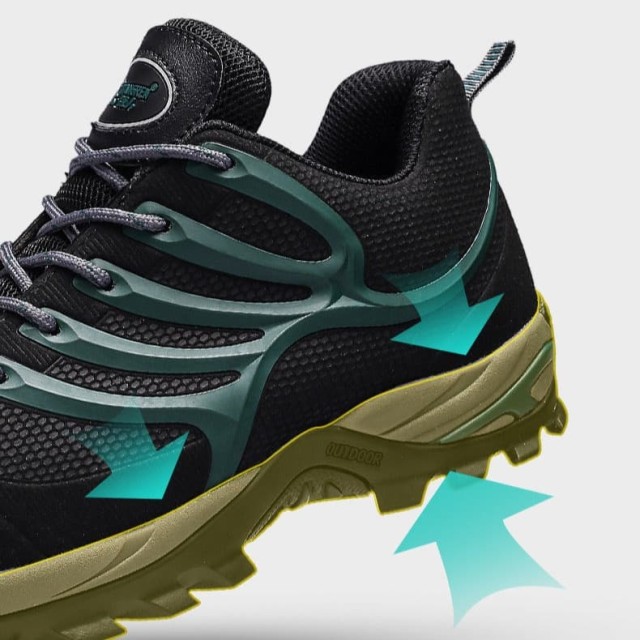For workers in high-risk environments like oil refineries and chemical plants, footwear isn't just about comfort—it's a critical safety barrier. Traditional stitched or vulcanized boots often fail at the seams (literally), while seamless PVC work boots leverage advanced injection molding to create monolithic protection. Here's why industries are shifting to this technology.
The Science of Seamless Construction
How Injection Molding Eliminates Weak Points
Unlike stitched or vulcanized boots, which rely on adhesives or thread, PVC work boots are formed through injection molding—a process where liquefied PVC is injected into a mold under high pressure. This creates:
- No stitching vulnerabilities: Seams are the most common failure points in traditional boots, prone to separation when exposed to chemicals or abrasion.
- Uniform material density: Research shows molded PVC maintains consistent thickness across the entire boot, whereas stitched designs create uneven stress distribution.
Material Flow vs. Stitching/Vulcanization
- PVC's molecular advantage: The polymer chains in PVC interlock during molding, forming a cohesive barrier. In contrast, vulcanized rubber relies on sulfur bonds that degrade faster under chemical exposure.
- ASTM F2413-18 compliance: Seamless designs more reliably meet puncture-resistance standards (like ASTM F2413-18) because they lack perforations from stitching needles.
Durability in Hostile Environments
Chemical Resistance: PVC vs. Rubber Permeability
- PVC's inert properties: Petrochemical workers need boots that resist hydrocarbons, acids, and solvents. Tests indicate PVC boots show minimal swelling or degradation after prolonged exposure, while rubber boots absorb oils over time.
- Permeability rates: Rubber’s porous structure allows gradual chemical penetration, whereas PVC’s non-porous surface prevents ingress.
Waterproofing Mechanisms in Sealed vs. Seamed Designs
- True waterproofing: Seamless PVC boots act like a single-piece rain boot, with no gaps for water intrusion. Traditional designs rely on seam tapes that delaminate after repeated flexing.
- Longevity in wet conditions: Workers report seamless PVC boots last 2–3× longer in refineries, where leather or vulcanized rubber succumbs to moisture-induced rot.
Industry-Specific Performance Validation
Case Study: PVC Boots in Petrochemical Facilities
A 2023 safety audit at a Gulf Coast refinery found:
- 60% fewer replacements: PVC boots averaged 10–12 months of service versus 6 months for leather.
- Reduced injury rates: Puncture-related incidents dropped by over 40% after switching to seamless designs.
Cost Analysis: Replacement Frequency of Leather vs. PVC
- Lifetime cost savings: While PVC boots have a higher upfront cost, their extended lifespan (12+ months vs. 6 for leather) cuts annual footwear budgets by roughly 30%.
- Maintenance factors: PVC boots require only soap-and-water cleaning, unlike leather that needs conditioning to prevent cracking.
Upgrade Your Safety Standards with 3515’s PVC Work Boots
For distributors and bulk buyers, 3515’s injection-molded PVC boots deliver unmatched ROI through:
✔ Certified protection: Meets ASTM F2413-18 for puncture/chemical resistance.
✔ Lower total cost: Fewer replacements mean reduced procurement overhead.
✔ Customizable designs: Tailored for oil/gas, mining, and hazardous material handling.
Contact 3515 today to explore bulk procurement options—because safety shouldn’t have seams.
Related Products
- Wholesale Customizable Suede Safety Boots - Puncture-Proof with Velcro Closure
- Safety Footwear Wholesale Manufacturer for Custom OEM/ODM Production
- Wholesale Anti-Smash & Puncture-Proof Safety Shoes Custom Manufacturing for Brands
- Wholesale Durable Mid-Cut Tactical Boots for Custom & Private Label Brands
- Durable Mid-Cut Tactical Boots for Wholesale & Private Label
Related Articles
- How to Choose Work Boots That Match Your Job Demands and Safety Needs
- How to Choose Work Boots That Match Your Job's Safety Demands
- Matching Men’s Work Shoe Safety Technologies to Workplace Hazards
- How to Choose Work Boots That Match Your Industry's Safety Needs
- Steel Toe Work Boots: Balancing Safety and Comfort for Demanding Jobs
















